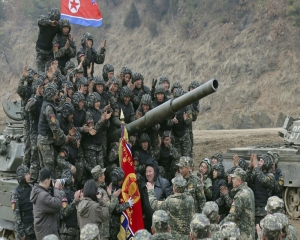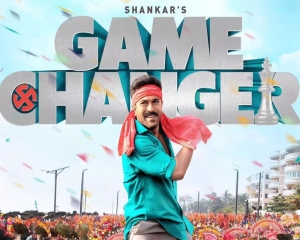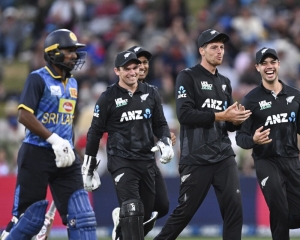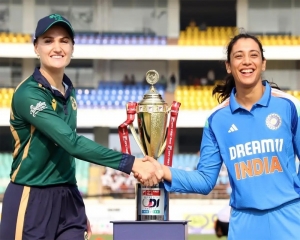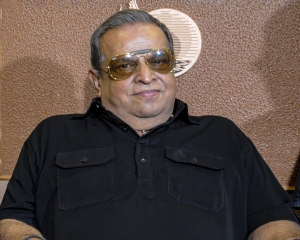In the present atmosphere of competitive politics, we can’t dream of such a great collective effort at nation-building as achieved by the Constituent Assembly
Almost all religions have sacred texts revered by their followers. In a similar manner, for a Republic, the Constitution can be termed as its sacred text. Today, as we observe the 70th anniversary of the signing of the Indian Constitution, which is also known as the Constitution Day as well as the National Law Day, it is time to look back at the stellar role of the institution which gave birth to it. The Constituent Assembly undertook this duty with unparalleled dedication, devotion, sincerity and enthusiasm over a period of 167 days, from December 9, 1946 to November 25, 1949.
While kings and kingdoms have dominated Indian history for over two millennia, one cannot ignore the fact that democracy was not wholly unknown, though not as advanced as in ancient Rome. The Lichchavi State, with its capital at Vaishali, was in all probability the earliest form of a well-organised Republic. It was governed by an assembly of nobles with an elected president, who was known as the nayak (leader). But this was something unique and rare as even our ancient laws of Manu have only spoken of kings, their responsibilities, conduct and so on. At the same time, we have had from times immemorial the grassroot- level institution of Panchayats in various Janpads (republics). The Panchayat was a very strong institution and besides giving a voice at the local level to the populace, it was able to ensure a certain degree of orderliness and regulation. Similarly, the ancient Buddhist Sanghas had their own parliaments. But history is a witness to the fact that over the centuries, due to several factors, we lost this democratic system.
On the other hand, as late as 1857, at the time of the First War of Independence, the rebels could not think of anything else as an alternative to the colonial masters but only reaffirmed their faith in the last Mughal emperor. It would, therefore, be safe to infer that our political culture had remained deeply ingrained in the rule of kings and their obedience and subservience. Independence from colonial rule had a much different meaning for them.
With such a historical background, it was indeed revolutionary to think of the Indian nation in terms of a democratic republic. But the struggle for freedom had begun, which saw its culmination in the formation of the Constituent Assembly and eventual attainment of Independence. It was Mahatma Gandhi, who in 1922, during his famous speech on Swaraj (self-rule) stated, “When the settlement comes, it will ratify the wishes of the people of India as expressed through her freely-chosen representatives.” This concept was further strengthened by Jawaharlal Nehru, who while delivering the presidential address at Lahore in December 1929, made explicit references to the drafting of a Constitution. As a follow-up, the idea of having a Constituent Assembly was conceptualised for the first time in 1933. Ultimately, in pursuance of the Cabinet Mission plan, the Constituent Assembly was formed through indirect elections as it was felt that having a direct election would lead to a considerable delay.
Though the Constituent Assembly came into being on December 9, 1946, its drafting committee was elected only on August 29, 1947. One of the first things the president of the Assembly, Rajendra Prasad, did was to send BN Rau, the constitutional advisor to undertake a study of Constitutions of several countries. Later these, along with the Government of India Act, 1935, became the sources for our Constitution. BR Ambedkar defended this by stating, “The charge of producing a blind copy of the Constitutions of other countries is based, on an inadequate study. As to the accusation that the draft Constitution has been produced as a good part of the provisions of the Government of India Act, 1935, I make no apologies. None holds patent rights for fundamental ideas of a Constitution.”
One of the most important and seminal decisions of the Constituent Assembly was to ensure that we followed a democratic and a republican form of Government. Inspired by the US presidential system and the British Westminster system, the Assembly pushed hard for vigorous debates regarding the adoption of either of the political systems. The presidential system, which has a non-parliamentary Executive, was advocated by socialists like KT Shah. BR Ambedkar, on the other hand, vouched for a system that would make the Executive responsible to the Parliament. This was supported by KM Munshi, Nehru and others.
In the absence of a written Constitution, the British system, which functions on established conventions, is naturally dominated by the legislature. Thanks to the Constituent Assembly, in our country, each functioning constitutional institution drew its strength from the written Constitution.
Such constitutional institutions have been considered to be the pilots of constitutional norms. The luminaries in the Constituent Assembly specifically underlined the importance of institutional independence of such bodies and emphasised upon their importance for preservation of democracy. Two of our immediate neighbours, who did not give any importance to such institutions, have suffered rapid changes in the structure of the Government and its consequences.
Despite the progress, movement forward and social changes brought in by the generational change and times, it seems to be of concurring relevance to refer to the debates in the Constituent Assembly, so as to better appreciate certain constitutional issues. The extent of admissibility of the Constituent Assembly and the Lok Sabha debates has evolved over a period of time. In the Golaknath case, out of the 11 judges, two pronounced such debates as inadmissible while interpreting Article 368. The remaining judges did make a reference to the debate without pronouncing on the admissibility. This view has since undergone a change as in Kesavananda Bharati, it was suggested that the most sensible approach would be to look at the debates to ascertain the intention of the member and see whether it is of any help in that situation. To that extent, these debates remain relevant for the purposes of interpreting the Constitution, particularly as and when an amendment comes before the Supreme Court to adjudge its vires.
The relevance of Constituent Assembly debates arises from the fact that a number of useful suggestions were made by the then members, which had not been accepted at that time but have now been incorporated through amendments.
For instance, the Election Commission (EC) consists of a Chief Election Commissioner (CEC) and two Election Commissioners at present. Prior to 1989, it was headed only by the CEC. During the debate in the Constituent Assembly it was argued by Shibban Lai Saksena, “It will be far more economical and useful if a permanent EC is appointed; not only the CEC but three or five members of the Commission who should be permanent and who should conduct the elections. I do not think that there will be lack of work because all the elections will not synchronise but they will be at varying times in accordance with the vote of no-confidence passed in various Legislatures. This Commission should be permanent and all the Commissioners should be appointed in the same manner as the CEC. They should all be appointed by a two-third majority of the Legislature and be removable in the same manner.” How prophetic he was.
The appointment and removal of the current Election Commissioners has indeed been a point of debate as they can be removed from office on the recommendations of the CEC to the President, whereas the CEC’s removal would require a parliamentary procedure. Yet another fundamental provision introduced by the Constituent Assembly in the draft was on universal adult suffrage as a right. This provision was far more progressive than even some of the more advanced countries. This measure alone was instrumental in immediately bringing about a realisation among several political and social groups that they had become political forces to reckon with.
The members of the Constituent Assembly had given us this sacred document but the intent was never to keep it frozen. It has remained an organic entity, which has been amended from time to time as per procedures. So far there have been three serious attempts at reviewing the Constitution through the Sarkaria Commission (1987), the Venkatachaliah Commission (2002) and MM Punchhi Commission (2008). In spite of their significant contributions, the politics of the day has prevailed.
In the present atmosphere of competitive politics, it is almost impossible to even dream of such a great collective effort at nation-building as achieved by the Constituent Assembly.
(The author is a former Governor and a Senior Adviser at the Pranab Mukherjee Foundation)














